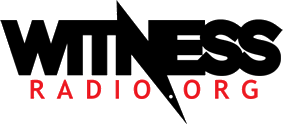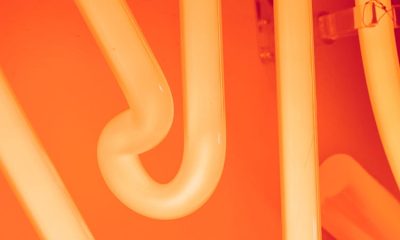SPECIAL REPORTS AND PROJECTS
Ugandan communities battle to benefit from mining on their land
Published
3 years agoon
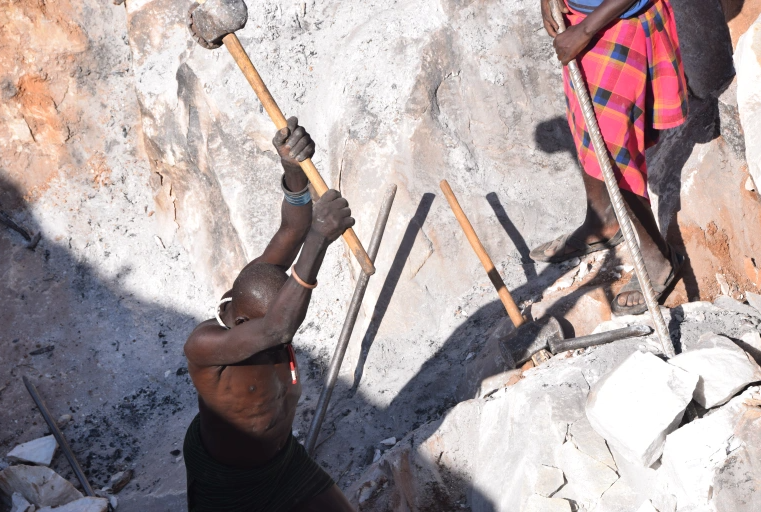
Communities in Karamoja face an uphill task organising to beat international capital and authoritarian politics.
Rupa, Uganda – A handful of artisanal miners stand shirtless in an open pit, breaking boulders that glint white in the sun. Nearby, soldiers stand sullenly at the gate of the Sunbelt Marble Mine and Factory, owned by Chinese businessmen who have sunk $13m into the project.
These are the two faces of the mining rush in the Karamoja region of northeast Uganda: small-scale freelance miners, toiling with basic equipment for scant reward, and a mix of wealthy foreign and local investors protected by the state.
Here in Rupa, a sub-county of Moroto district, the locals have seen companies come and go, buying up land and dividing communities. So in 2017, when they got wind that a Chinese company was coming, they were determined to do things differently: this time, they were going to organise.
It was a pioneering attempt to ensure that local people benefitted from mining, building on customary ownership and exploiting little-used provisions of Ugandan land law.
But the story of how it worked – and how it did not – shows just how hard it is for communities to organise in the face of international capital and authoritarian politics.
Mining rush
Many of the 1.2 million people in Karamoja are cattle-keepers, driving their herds across grasslands managed by clan and custom. The rains are fickle, so negotiating access to pasture involves an element of give-and-take.
But the mining companies that are exploring the region want something solid and immovable: the minerals that lie beneath the soil, including marble, limestone, copper and gold.
In the early 2000s, the army forcefully disarmed the gun-wielding cattle-raiders who once roamed the plains, and speculators rushed in during the ensuing peace.
“The first businesspeople who came were taking over the land,” says Simon Nangiro, chairman of the Karamoja Miners Association, which represents small-scale miners in the region. “Companies come with military accompaniments … [They’re] negotiating behind the scenes with people who are vulnerable.”
According to the mining cadastre, the government has granted full mining leases in Karamoja to four companies – Sunbelt, Tororo Cement, DAO Marble and Mechanized Agro – across 79 square km (31 square miles) of land.
It has also issued licences for exploration to dozens of other local and foreign companies on roughly 4,000 square km (1,544 square miles) and is considering applications on nearly 5,000 square km (1,931 square miles) more.
Documents like leases, licences and land titles are how the modern state speaks – but it is a language foreign to Karamoja, where ownership is rarely written down and only a quarter of people can read.
“Here in Karamoja we have a customary land tenure system,” explains John Bosco Logwee, an elder in Rupa and one of the leaders of organising efforts there. “As a result, people [from outside] looked at the land and thought it does not belong to anybody.”
In Uganda as a whole, an estimated 80 percent of the land is held customarily although exact figures are hard to come by. The problem of proving who owns what worries everyone from activists, who warn of land grabs, to the World Bank, which wants to spur rural property markets.
Under the 1998 Land Act, communities can create “communal land associations” (CLAs) to defend their collective land rights. More than 600 have been incorporated nationwide, often with World Bank support.
Some of the first to be established were in Karamoja, where 52 were set up in 2012-2013 by a non-governmental organisation, the Uganda Land Alliance. According to Edmond Owor, its former executive director, the CLAs had some early successes in fending off fraudulent investors. But in 2016, the Alliance itself collapsed due to internal governance problems, leaving the fledgling CLAs on their own.
“The creation of a CLA is a very easy process, and that’s where the easy work ends,” says Simon Longoli, executive director of the Karamoja Development Forum (KDF), a civil society group based in Moroto. “We find it very difficult to trust a piece of paper to ensure the rights of the community over a piece of land.”
What people really needed, he thought, was organising and capacity building to assert the rights they had on paper. In short, they needed power.

Community organising
Communities in Rupa had been at the forefront of Karamoja’s mining rush. A 2014 report by Human Rights Watch described how two foreign-owned companies had come to the area and started exploration without the consent of the locals.
“International capital has come into Karamoja, it has allied itself with powerful political and military elites at the centre, facilitated by influence peddlers,” says David Pulkol, a Rupa indigene who formerly served as a member of parliament, government minister and head of Uganda’s external intelligence agency. “Those three are in the same bed, dispossessing the ordinary people of their livelihoods.”
So in 2017, the three clans of Rupa sub-county joined their CLAs together to form the Rupa Community Development Trust (RUCODET), taking out the formal title to the land on behalf of 35,000 people.
Longoli and his KDF colleagues arranged training for the trust’s leaders in negotiation and other skills. No other community in Karamoja had organised on such a scale to take on mining companies.
The arrival of the Sunbelt mine would give RUCODET its first major test. Under Ugandan law, all minerals belong to the government. But landowners have “surface rights” to the land itself, which have often been trampled by mining companies.
Now, thanks to RUCODET, the Chinese investors would have to negotiate with the community. “It was tough,” says Logwee, the elder. “We had no experience before of that kind of thing.”
Sunbelt had strong backing from Operation Wealth Creation, a sprawling Ugandan military programme that started out giving seeds to farmers and was now helping build fruit factories, disburse credit and develop the minerals sector.
The programme is led by Salim Saleh, Ugandan President Yoweri Museveni’s ubiquitous brother, whom many consider the second-most powerful man in the country. He is a feared general with extensive business interests, who has been accused by UN experts of grabbing resources during the 1998-2003 Congo war – an allegation he has always denied.
As part of the negotiations, a team from RUCODET travelled 400km to Kapeeka, where a Chinese-owned industrial park has been constructed close to Saleh’s personal residence. Longoli of KDF says that some leaders in RUCODET and in local government were taking calls from Saleh himself to get an agreement signed.
Major Kiconco Tabaro, a spokesman for Operation Wealth Creation, claims that it was not directly involved in the negotiations but has “a strategic working relationship with all ministries, departments and agencies of government” to “help bring about socioeconomic transformation”.
It was hard to say no to a man like Saleh, and the leaders of RUCODET did not. In 2018, they signed away surface rights to 3.3 square km of land to Sunbelt for 21 years, receiving compensation of 1.8 billion shillings ($500,000), they say.
By one yardstick, that was a lot of money. Small-scale miners in Rupa say they get just 100,000 shillings ($28) from traders for filling a 7-tonne truck with stone, a task which takes four people at least a week.
But Sunbelt expects gross revenues of $30m a year, according to the 2021 manifesto of the ruling National Resistance Movement – making the payout to RUCODET equivalent to one week’s turnover. A spokesman for Sunbelt declined an interview request for this story.
The leaders of RUCODET used 100 million shillings ($28,000) to set up 94 educational scholarships for schoolchildren and university students. Some of the rest was handed out as cash to community members.
But there was protest from those who felt left out and mutterings that money was misused or even stolen – allegations which Logwee dismisses as “speculation”. Three people familiar with the matter told Al Jazeera that the lawyer who advised RUCODET charged 400 million shillings ($110,000) for his services, which included the cost of surveying and titling the land.
Then tragedy struck. The leader of RUCODET was a man called Marjory Dan Apollo Loyomo, a brother of the former spy chief Pulkol. “He was very strong, he was very charismatic, he was very committed,” recalls Longoli. He was also the elected chairman of Rupa sub-county, which meant he had to represent his people in disputes.
In 2019, after a decade of peace, the armed cattle-raiders started to make a comeback. Loyomo had disagreed with aspects of the army’s handling of the issue.
On December 17 that year, according to the UN Human Rights office, the army called him to a military detach in Rupa. It had impounded cattle after a raid; local people were angry. Loyomo, as sub-county chairman, tried to deliberate with the officers. A soldier shot him dead.
The regional army commander was transferred soon afterwards. His successor, Brigadier General Joseph Balikudembe, says that he cannot comment on the incident due to ongoing proceedings against the soldiers involved.
Nobody that Al Jazeera spoke to wanted to speculate on the reasons for Loyomo’s killing, but everyone agreed that it was a devastating setback.
“The loss of a torchbearer, the founder chairman, has been a very big loss for RUCODET,” says Logwee, who has succeeded him to the role.
“He was fighting really for his people,” argues Joyce Nayor, an activist and Rupa resident who is critical of the trust’s current leadership. “Since he died, RUCODET has also died a natural death.”
Hardly any local people got jobs in the Sunbelt mine, Al Jazeera heard on two visits to the area with local activists. Some small-scale miners have been allowed to remain in a corner of the land that was allocated to the company, where they break boulders for sale.
They complain that Sunbelt tried to push them into an ever-smaller area and take away the traders who would buy their stone – and that RUCODET has done little to help.
“RUCODET is there in name only,” says Isaiah Aleu, a miner.

Choppy waters
Land trusts and CLAs are promising tools for communities to defend their rights, say land campaigners. But there is no consensus about how they should navigate turbulent political waters.
Pulkol is now helping build RUCODET’s capacity through the Africa Leadership Institute, a non-governmental organisation he leads. He thinks the best hope for Karamoja is to work with investors and government for shared benefits, rather than to block them altogether.
Longoli, the activist, is not so sure. Often when it comes to minerals, “the best deal is just no deal”, he says. “RUCODET, because of pressure from above or pressure from within the institution, was in a hurry to close deals.”
Yet he remains hopeful that organisations like RUCODET can be the basis for something better. “These are not perfect but they give a bridge somewhere,” he says.
The next test is coming soon.
In Loyoro sub-county of Kaabong district, 100km (62 miles) to the north, a new company called Moroto Ateker Cement is exploring for limestone. Pulkol, representing the local government of Moroto, sits on its board.
The state-owned Uganda Development Corporation has a 45 percent stake in the project. The seven clans of Loyoro have started the process of forming a trust, after the RUCODET model.
Meanwhile, in the bush, surrounded by soldiers and tsetse flies, exploratory drilling machines bore down into their land.
Source: Al Jazeera
Related posts:
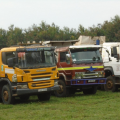
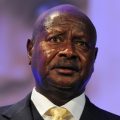 Uganda: Moroto Residents Accuse President Museveni of Grabbing Their Land
Uganda: Moroto Residents Accuse President Museveni of Grabbing Their Land
 State Power: Army Used Expired Mining license to Forcefully Evict 120,000 Families Off Gold-Rich Land
State Power: Army Used Expired Mining license to Forcefully Evict 120,000 Families Off Gold-Rich Land
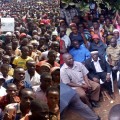 3 Mining Companies named to be evicting 120, 000 families off 12-Square miles in Mubende
3 Mining Companies named to be evicting 120, 000 families off 12-Square miles in Mubende
 Minister to arrest land grabbers in Karamoja
Minister to arrest land grabbers in Karamoja
You may like
SPECIAL REPORTS AND PROJECTS
‘Food and fossil fuel production causing $5bn of environmental damage an hour’
Published
2 weeks agoon
December 22, 2025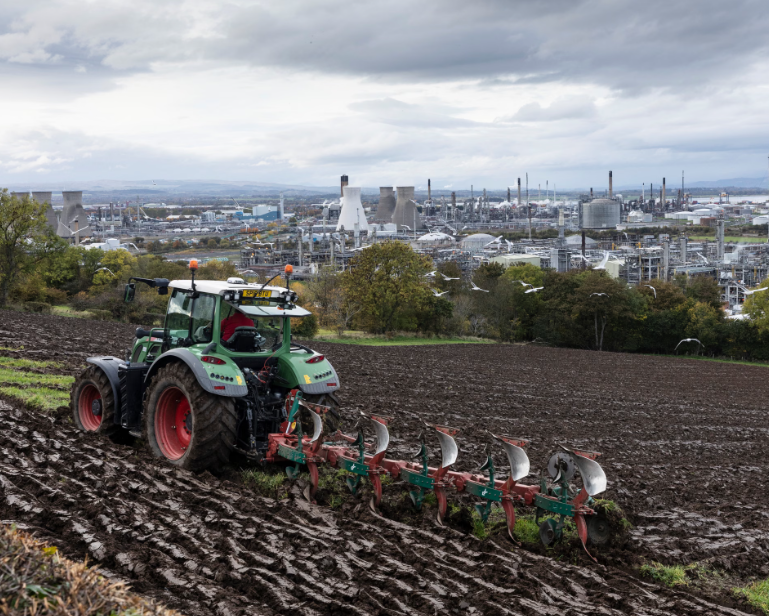
UN GEO report says ending this harm key to global transformation required ‘before collapse becomes inevitable’.
Related posts:
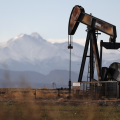
 Activists storm TotalEnergies’ office ahead of G20 Summit, demand end to fossil fuel expansion in Africa
Activists storm TotalEnergies’ office ahead of G20 Summit, demand end to fossil fuel expansion in Africa
 New billion-dollar loans to fossil fuel companies from SEB, Nordea and Danske Bank.
New billion-dollar loans to fossil fuel companies from SEB, Nordea and Danske Bank.
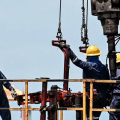 Fossil fuel opponents lobby Africans for support
Fossil fuel opponents lobby Africans for support
 Ecological land grab: food vs fuel vs forests
Ecological land grab: food vs fuel vs forests
SPECIAL REPORTS AND PROJECTS
Britain, Netherlands withdraw $2.2 billion backing for Total-led Mozambique LNG
Published
3 weeks agoon
December 17, 2025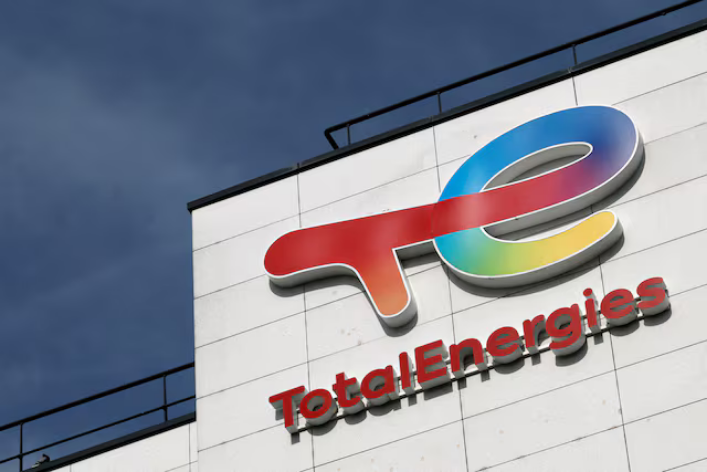
CONSTRUCTION HALTED IN 2021, BUT DUE TO RESTART
PROJECT CAN PROCEED WITHOUT UK, DUTCH FINANCING, TOTAL HAS SAID
CRITICISM FROM ENVIRONMENTAL, HUMAN RIGHTS GROUPS
Related posts:

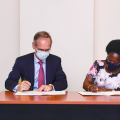 Uganda, Total sign crude oil pipeline deal
Uganda, Total sign crude oil pipeline deal
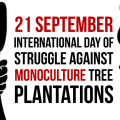 Witness Radio – Uganda, Community members from Mozambique and other organizations around the world say NO to more industrial tree plantations
Witness Radio – Uganda, Community members from Mozambique and other organizations around the world say NO to more industrial tree plantations
 NGOs file suit against Total over Uganda oil project
NGOs file suit against Total over Uganda oil project
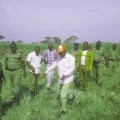 Agribusiness Company with financial support from UK, US and Netherlands is dispossessing thousands.
Agribusiness Company with financial support from UK, US and Netherlands is dispossessing thousands.
SPECIAL REPORTS AND PROJECTS
The secretive cabal of US polluters that is rewriting the EU’s human rights and climate law
Published
1 month agoon
December 5, 2025
Leaked documents reveal how a secretive alliance of eleven large multinational enterprises has worked to tear down the EU’s flagship human rights and climate law, the Corporate Sustainability Due Diligence Directive (CSDDD). The mostly US-based coalition, which calls itself the Competitiveness Roundtable, has targeted all EU institutions, governments in Europe’s capitals, as well as the Trump administration and other non-EU governments to serve its own interests. With European lawmakers soon moving ahead to completely dilute the CSDDD at the expense of human rights and the climate, this research exposes the fragility of Europe’s democracy.
Key findings
- Leaked documents reveal how a secretive alliance of eleven companies, including Chevron, ExxonMobil, and Koch, Inc., has worked under the guise of a “Competitiveness Roundtable” to get the Corporate Sustainability Due Diligence Directive (CSDDD) either scrapped or massively diluted.
- The companies, most of which are headquartered in the US and operate in the fossil fuel sector, aimed to “divide and conquer in the Council”, sideline “stubborn” European Commission departments, and push the European People’s Party (EPP) in the European Parliament “to side with the right-wing parties as much as possible”.
- Chevron and ExxonMobil were in charge of mobilising pressure against the CSDDD from non-EU countries. The Roundtable companies endeavoured to get the CSDDD high on the agenda of the US-EU trade negotiations and also worked on mobilising other countries against the CSDDD, in order to disguise the US influence.
- Roundtable companies paid the TEHA Group – a think tank – to write a research report and organise an event on EU competitiveness, which echoed the Roundtable’s position and cast doubt on the European Commission’s assessment of the economic impact of the CSDDD.
While Europeans were told that their governments were negotiating a landmark law to hold corporations accountable for human rights abuses and climate damage, a secretive alliance of US fossil fuel giants was working behind the scenes to destroy it. Collaborating under the innocent-sounding name ‘Competitiveness Roundtable’, eleven multinational enterprises have worked closely to eviscerate several EU sustainability laws, including the Corporate Sustainability Due Diligence Directive (CSDDD) and the Corporate Sustainability Reporting Directive (CSRD). This Competitiveness Roundtable may be unknown, but its members are a who’s-who of polluting, mainly US, multinationals, including Chevron, ExxonMobil, and Dow. The group seems to have run rings around all branches of the EU and the Trump administration to get what they want: scrapping, or at least hugely diluting, the CSDDD.
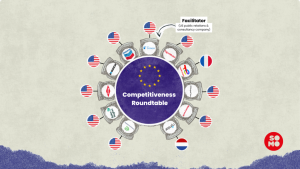
Leaked documents obtained by SOMO reveal how, under the pretext of the now-near-magical concept of ‘competitiveness’, these companies plotted to hijack democratically adopted EU laws and strip them of all meaningful provisions, including those on climate transition plans, civil liability, and the scope of supply chains. EU officials appear not to have known who they were up against. But the documents obtained by SOMO show a high level of organisation and strategising with a clear facilitator: Teneo, a US public relations and consultancy company.
The documents indicate that many of the companies involved wanted to stay hidden from view. After all, if it were widely known that a secretive group of mostly American fossil fuel companies like Chevron, ExxonMobil, and Koch, Inc. was working as a coordinated organisation to dilute an EU climate and human rights law, that might raise questions and serious concern among the public and the policymakers they were targeting. Many of the companies in the Roundtable have never publicly spoken out against the CSDDD.
Big Oil’s ‘Competitiveness Roundtable’
The Competitiveness Roundtable is dominated by fossil fuel companies, including three Big Oil companies (ExxonMobil, Chevron, TotalEnergies) and three other companies with activities in the oil and gas sector (Koch, Inc., Honeywell, and Baker Hughes). Other members are Nyrstar (minerals and metals, a subsidiary of Trafigura Group); Dow, Inc. (chemicals); Enterprise Mobility (car rentals); and JPMorgan Chase (finance).
Teneo, the Roundtable’s coordinator, has a track record(opens in new window) of working with fossil fuel companies, including Chevron, Shell, and Trafigura, and was hired by the government of Azerbaijan to handle public relations(opens in new window) when it hosted the COP29 climate conference.
In February 2025, the European Commission published the Omnibus I proposal(opens in new window), which aims to “simplify” several EU sustainability laws, including the CSDDD. The documents obtained by SOMO reveal that the Roundtable companies, which have been meeting weekly since at least March 2025, worked on deep interventions within each of the three EU institutions to get the Omnibus I package to align exactly with their views. The EU institutions are expected to reach a final agreement on Omnibus I by the end of 2025.
The documents reveal that the Roundtable companies’ activities in the Parliament are far more significant than what is visible in the EU Transparency Register(opens in new window). Eight of the Roundtable’s lobbying meetings during the Strasbourg plenary sessions of May and June 2025, listed in the Transparency Register, show Teneo as the only attendee, thereby failing to disclose the names of other Roundtable companies that participated in these meetings. Another three meetings the Roundtable held were not found in the EU Transparency Register(opens in new window) at all.
“Divide and conquer” the Council
In the European Council, the Roundtable plotted to “divide and conquer” EU governments to get the climate article in the CSDDD deleted. In June 2025, during the final weeks of negotiations in the Council on the Omnibus I proposal, the Roundtable discussed lobbying EU government leaders to “intervene politically” to ensure its priorities were included in the Council’s negotiation mandate. Subsequently, German Chancellor Merz and French President Macron reportedly(opens in new window) personally intervened(opens in new window) in the Council’s political process, leading to a dramatic dilution(opens in new window) of the texts(opens in new window) negotiated in the months before the intervention. Several of the changes made to the texts strongly align with the Roundtable’s demands, including delaying and substantially weakening the climate obligations, scrapping EU civil liability provisions, and limiting the responsibility of companies to take responsibility for their supply chains (the ‘Tier 1’ restriction).

Competitiveness Roundtable meeting document, 11 July 2025.
Additionally, the documents reveal that the Roundtable is still aiming to drum up a “blocking minority” to overturn the Council’s negotiation mandate during the trilogue negotiations, which started in November 2025. By “tak[ing] advantage of the ‘weak’ Council negotiating mandate” and disagreements between EU Member States on “contentious articles”, the Competitiveness Roundtable companies hope to force the Danish Council presidency to give up on including any form of climate obligations in the CSDDD – despite EU Member States’ agreement on this in the June 2025 Council mandate(opens in new window) .
To implement the divide-and-conquer strategy, the Roundtable assigned specific companies to “establish rapporteurships” with different EU governments. TotalEnergies would target the French, Belgian, and Danish governments, and ExxonMobil would target Germany, Hungary, the Czech Republic, and Romania.
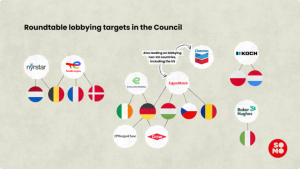
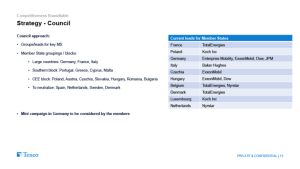
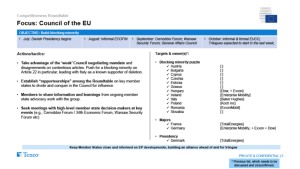
Circumventing “stubborn” European Commission departments
The Roundtable also discussed working on “circumvent[ing]” two “stubborn” European Commission departments involved in the Omnibus political process, DG JUST and DG FISMA, which, in their view, were “unlikely to be willing to see our side of the story”. According to the documents, DG JUST opposed deleting the climate article and restricting the Directive’s scope to only very large enterprises. The Roundtable aimed to diminish the role of these departments by pressuring President Von der Leyen and Commissioners McGrath (DG JUST) and Albuquerque (DG FISMA) by “organising letters from Irish and German business groups” and using an event held by the European Roundtable for Industry to “target” Von der Leyen and McGrath.
Read full report: Somo.nl
Source: Somo
Related posts:

 Victims of human rights violations in Uganda still waiting for redress
Victims of human rights violations in Uganda still waiting for redress
 UN Human Rights Chief urges EU leaders to approve key business and human rights legislation
UN Human Rights Chief urges EU leaders to approve key business and human rights legislation
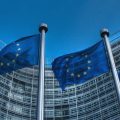 Business, UN, Govt & Civil Society urge EU to protect sustainability due diligence framework
Business, UN, Govt & Civil Society urge EU to protect sustainability due diligence framework
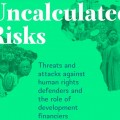 Development financiers fuel human rights abuses – New Report
Development financiers fuel human rights abuses – New Report

COP30 : a further step towards a Just Transition in Africa

‘Food and fossil fuel production causing $5bn of environmental damage an hour’

Four hundred fifty victim families of the Oil Palm project in Buvuma are to receive compensation by this Friday – Witness Radio

Britain, Netherlands withdraw $2.2 billion backing for Total-led Mozambique LNG

Four hundred fifty victim families of the Oil Palm project in Buvuma are to receive compensation by this Friday – Witness Radio

Women’s groups demand equality in land tenure security to boost food production.

Tension as Project-Affected Persons demand to meet Uganda’s President over Oil Palm growing on their grabbed land.

Land commission starts updating govt land countrywide.

Innovative Finance from Canada projects positive impact on local communities.
Over 5000 Indigenous Communities evicted in Kiryandongo District
Petition To Land Inquiry Commission Over Human Rights In Kiryandongo District
Invisible victims of Uganda Land Grabs
Resource Center
- REPARATORY AND CLIMATE JUSTICE MUST BE AT THE CORE OF COP30, SAY GLOBAL LEADERS AND MOVEMENTS
- LAND GRABS AT GUNPOINT REPORT IN KIRYANDONGO DISTRICT
- THOSE OIL LIARS! THEY DESTROYED MY BUSINESS!
- RESEARCH BRIEF -TOURISM POTENTIAL OF GREATER MASAKA -MARCH 2025
- The Mouila Declaration of the Informal Alliance against the Expansion of Industrial Monocultures
- FORCED LAND EVICTIONS IN UGANDA TRENDS RIGHTS OF DEFENDERS IMPACT AND CALL FOR ACTION
- 12 KEY DEMANDS FROM CSOS TO WORLD LEADERS AT THE OPENING OF COP16 IN SAUDI ARABIA
- PRESENDIANTIAL DIRECTIVE BANNING ALL LAND EVICTIONS IN UGANDA
